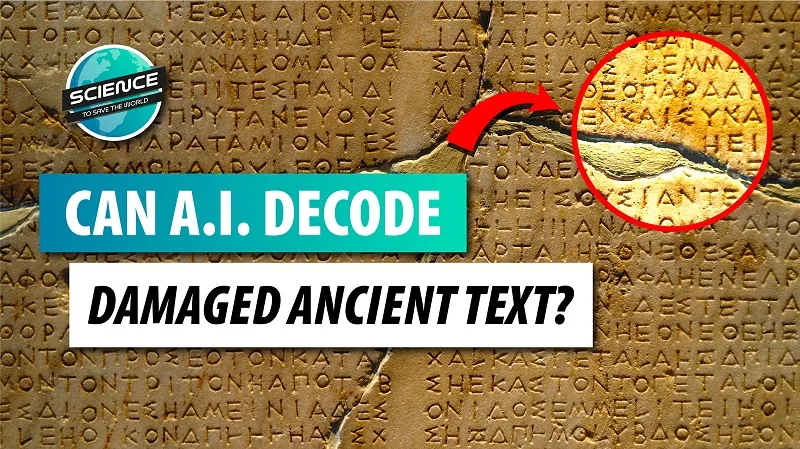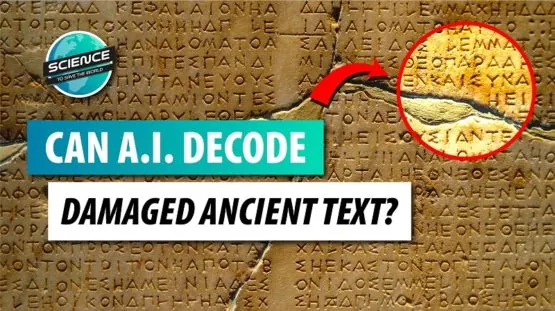Over the centuries, many important ancient texts and inscriptions have been damaged to the point of illegibility. Can AI solve the mystery of broken or incomplete texts, uncovering lost secrets of the past?
The Sumerians began writing on clay tablets more than 5,000 years ago. The ancient Greeks were writing on stone, pottery and metal more than 2,500 years ago. They chronicled everything from leases and laws to calendars and oracles, providing a rich picture of Mediterranean life. Regrettably, the picture is incomplete.
Many surviving writings have been damaged, or moved from their original sites over the centuries. Contemporary dating techniques, such as radiocarbon dating, cannot be performed on these materials, making them difficult to place in the timeline. In an article published in Nature, DeepMind presented Ithaca, an AI platform developed in collaboration with several universities. Ithaca is the first deep neural network that can reconstruct damaged inscriptions’ missing text, identify their original location, and help establish the date they were made. Named after the Greek island in Homer’s Odyssey, Ithaca expands on Pythia, Deep Mind’s earlier textual restoration system.
Tests demonstrate that Ithaca can restore damaged texts with 62% accuracy, identify their original location with 70% accuracy, and date texts to within 30 years of their ground-truth date ranges. Already, historians have used the tool to reassess pivotal moments in Greek history. Ithaca is trained using the largest digital dataset of Greek inscription from the Packard Humanities Institute.
To maximize Ithaca’s utility as a research tool, Deep Mind developed several visual aids to help historians clearly interpret Ithaca’s findings: Restoration Hypotheses, Geographical Attribution, Chronological Attribution, and Saliency Maps.
Working alone to recover old writings, experts generally achieve about 25% accuracy. Ithaca, by itself, achieves 62% accuracy in repairing damaged texts. When historians and Ithaca team up, their combined performance improves to 72%! This demonstrates the power of human-machine collaboration to promote historical interpretation, establish relative dates for historical events, and even contribute to modern methodological debates.
For instance, historians currently are divided on the date of a series of major Athenian decrees issued during the lives of notable personalities such as Socrates and Pericles. The decrees were long assumed to have been written before 445 BCE, but fresh evidence reveals they were written around 420 BCE. Although this may appear to be a minor distinction, these decrees are critical to our knowledge of classical Athens’ political history. The earlier figure of 445 BCE was included in the training dataset.
To put Ithaca’s predictions to the test, it was retrained on a dataset that didn’t include the dated inscriptions. These texts were then submitted for study. Amazingly, Ithaca’s average estimated date for the decrees is 421 BCE, coinciding with the most recent dating advances and demonstrating how machine learning may contribute to arguments about one of Greek history’s most critical episodes.
While ancient Greece is important to our understanding of the Mediterranean world, it is simply one aspect of a global panorama of civilizations. This is why DeepMind is working on Ithaca versions trained on other ancient languages as well. And historians may already utilize datasets in the existing architecture to research other ancient writing systems, ranging from Akkadian to Demotic, from Hebrew to Mayan. This work demonstrates how models like Ithaca may harness the cooperative potential of AI and historians, transforming the way we study and write about one of the most critical periods in human civilization.
Explore the interactive version of Ithaca yourself Original paper
Here’s how Nature described it – “The origins of ancient inscriptions are often shrouded in mystery. Writing carved into stone millennia ago can be hard to read and is often missing entire sections of the text. Now a neural network, trained on thousands of existing inscriptions, could help historians figure out when and where a piece of writing comes from – as well as fill in missing words and characters.”




